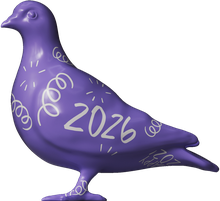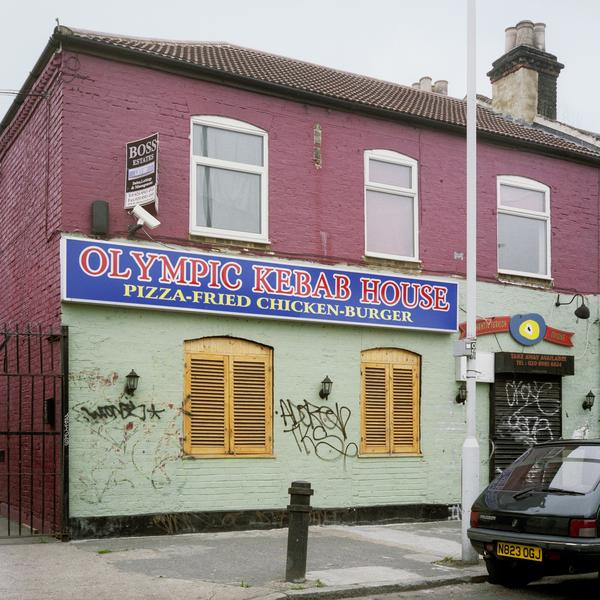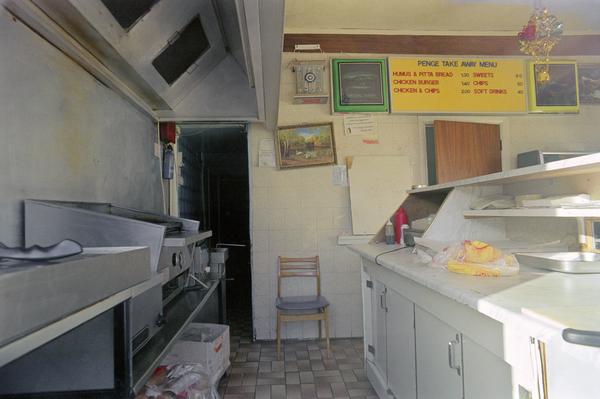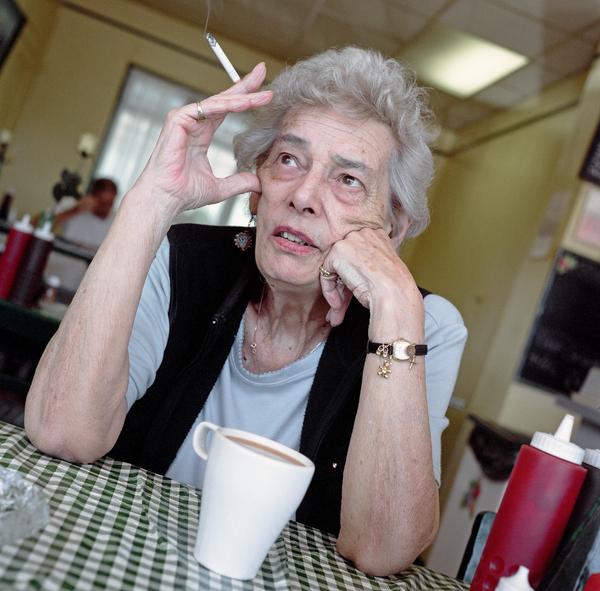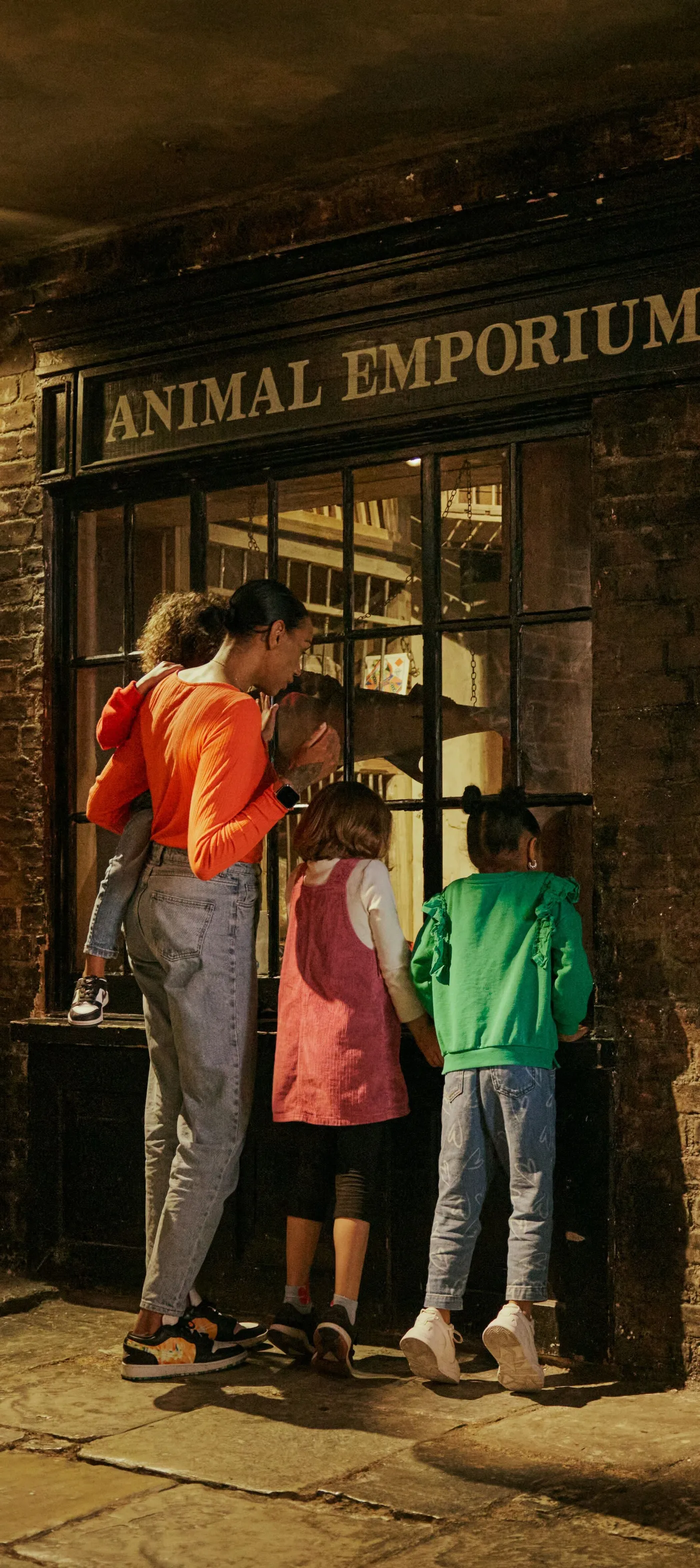Morley’s: South London’s chicken shop
Since 1985, ravenous Londoners with a craving for chicken have headed to the bright red signs of Morley’s. It’s earned a cult south-London following, celebrity fans and now city-wide success – a rise that’s coincided with a major cultural moment for chicken shops.
Sydenham
Since 1985

Spicy wings, chips and a strawberry Mirinda
London’s high streets are lined with chicken shops. But for many south Londoners, there is only one choice.
Morley’s has fried itself a place in London life – as the affordable afterschool meal, the comforting go-to, and the satisfying end to a night out.
Founded in Sydenham by Kannalingam ‘Indran’ Selvendran in 1985, Morley’s made its name in south London. Love for Morley’s became proof that you were from ‘south’.
Now there are over 100 shops, and Morley’s has crossed the River Thames. But it’s still a family-run business.
Where London eats is part of the city’s story. Like pie and mash shops before them, chicken shops offer quick, reliable food and a place to socialise. For many, they’re a serving of greasy-fingered nostalgia.
In 2025, London Museum worked with Morley’s on its 40th anniversary to add the original red sign from the Sydenham branch to our collection.
“South London is where the heart is, it’s home”
Shan Selvendran, Morley's CEO
Who founded Morley’s?
Morley’s was founded by Kannalingam ‘Indran’ Selvendran, a former school caretaker who came to London in the 1970s.
Selvendran grew up in Colombo, Sri Lanka. When he set up Morley’s, he was following in the footsteps of countless others who’ve brought their entrepreneurial energy to London.
According to his son Shan, Morley’s was intended as “a proud local rival to the American fast-food giants such as KFC”. He says that his dad “wanted to make Morley’s a household name”.
Indran died in 2002, but the business stayed in the family and was passed down to Shan, who is now Morley’s CEO.

The opening day of the first Morley's in Sydenham, 1985, with a mascot and members of the Selvendran family.
The first Morley’s
The first Morley’s opened in 1985 in Sydenham, in the south-east London borough of Lewisham. Morley’s still has a Sydenham branch, and it’s still co-owned by the Selvendran family.
For 35 years, Morley’s stayed south of the River Thames, growing its reputation by staying loyal to the communities it served. “Staying rooted in south London allowed Morley’s to refine its offering, build a cult following, and create something authentic before expanding more widely,” says Morley's CEO Shan.
“South London is where the heart is, it’s home. Our head office is still based here, the family still lives in the area, and it remains the heart of our business, with the largest cluster of Morley’s stores.”
Spreading its wings
Like other fast-food chains, Morley’s is organised as a franchise. It licenses others to open new stores, allowing them to start their business with the Morley’s brand and menu.
By 2000, Morley’s had 30 shops across south London. While other businesses struggled during the Covid-19 pandemic, Morley’s bucked the trend, remaining open to serve takeaways to the local community.
In 2020, it was time for north and east Londoners to find out what all the fuss was about. Morley’s opened new shops in Finsbury Park and Brick Lane – its first north of the River Thames.
People beyond London also got a taste of Morley’s. In 2023, its 100th store opened in Brighton.

The Morley’s menu
The core of the Morley’s menu is battered and deep-fried chicken – think popcorn chicken, strips, wings, nuggets, burgers. Chips, dips and soft drinks round out the meal. A can of Mirinda, a brand of soft drink, is a distinctive favourite.
One item – the Bossman burger – is a nod to the affectionate nickname diners use for the staff behind the counter.
“Honestly, it’s all about remaining authentic and close to our roots,” says Shan. “Our meals have always been affordable, but we never compromise on ingredients.”
Morley’s cult status
Morley’s fans are vocal. Decades after Morley’s was founded, the love its owners had poured into the business was returned by artists and musicians who’d grown up eating there, and who saw it as part of their local identity.
In 2018, Stormzy recorded the video for his song Big for your Boots in a Morley’s in Thornton Heath, Croydon. Krept, another south London rapper, used the same branch for the video of his Morley’s Freestyle.
Viral video series have cemented the place of chicken shops in British culture. Morley’s has been reviewed by the Chicken Connoisseur and hosted Amelia Dimoldenberg’s toe-curlingly awkward Chicken Shop Dates – racking up tens of millions of views across the world.
“A 2023 study counted 4,424 chicken shops across Great Britain”

This Morley's shop is one of the thousands of chicken shops across the UK.
The origins of fried chicken
How did southern fried chicken become so popular in London? Morley’s is part of a much longer story.
The dish is most associated with the southern states of America. But one theory traces it further back, to the thousands of Scots who journeyed to America in the 1600s and 1700s.
In the south of America, an old Scottish recipe – chicken, battered and fried in pig’s fat – may have been combined with the traditional herbs and spices used by enslaved African people.
This spiced fried chicken was cherished by African Americans, becoming a core part of southern US cuisine.
In the 1950s, ‘Colonel’ Harland Sanders made southern fried chicken big business. His Kentucky Fried Chicken (KFC) is now one of the most recognisable brands around the world.
Chicken shops in the UK
KFC’s first restaurant outside of the US opened in 1965 in Preston, in the north of England. As the chain expanded, independent chicken shops began to follow the model.
A 2023 study counted 4,424 chicken shops across Great Britain. In inner London, there’s a chicken shop on practically every high street. Mile End, in east London, has so many it’s known as ‘Chicken Shop Mile’.
In an interview with the Financial Times, Shan attributed the spread to Asian entrepreneurs: “In Asian culture when one person does one thing and they can see you doing well in it, they want to do it. It’s just a model and a system they know works.”

